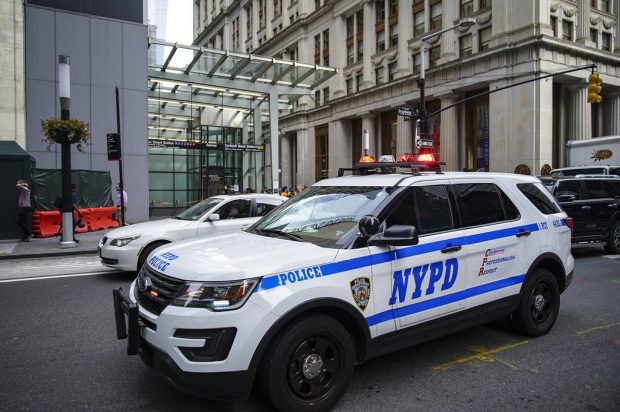
The New York Police Department (NYPD) is as complex and sometimes contradicting a structure as the city itself. In some respects, the NYPD is already a myth that has shaped the image of New York worldwide through film and TV. 51,000 people work for the NYPD, including 34,000 uniformed workers.
The NYPD is divided into 76 precincts and 300 units, ranging from counterterrorism to mounted police, and is about 55,000 men and women, including civilian employees. For the most part, these are patrol officers, of whom there are 41 for every 10,000 inhabitants, more than anywhere else in the USA (the national average is 23). There are around 10,000 officers on patrol every hour. Huge numbers, but the origins of the huge agency were modest.
New York began to grow explosively around 1830. The number of poor immigrants who toiled in factories and – often under miserable conditions – lived in tenements rose sharply. The rampant poverty, the many animosities between different immigrant groups, the gang, and the widespread drunkenness formed an ideal breeding ground for crime and riots. Robbery, prostitution, and gambling were the order of the day, and murders were not uncommon either. The harbor area and the Five Points slum, legendary in New York history, were particularly hard hit. There was a feeling that public order was always on the verge of total collapse.
READ: The New York Fire Department: Background to the Huge Organization with More than 11,000 People
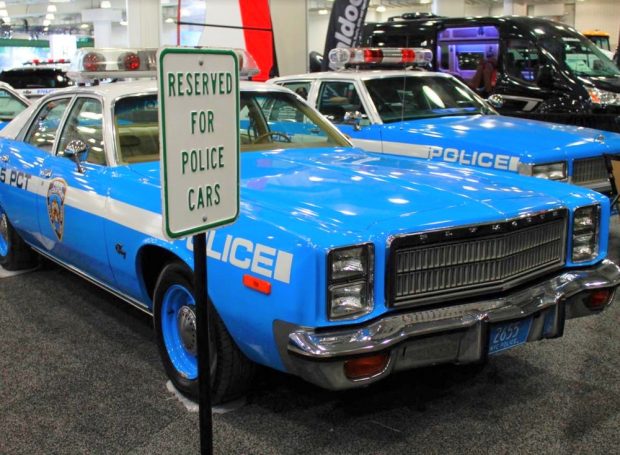
1989 Chevrolet Caprice: Photo Kyle Adams
What law enforcement officers existed at that time consisted of politicians appointed and unskilled persons who performed a kind of guard duty. The members of this militia-like organization did not get a salary, but were paid according to a certain fee schedule: There were certain sums for services such as “carrying out an arrest” or “issuing a fine”. In the eyes of many, this system made it more important for appointees to earn commissions and to please the politicians to whom they owed their jobs than to actually ensure law and order. Inspired by the example of London, the first full-time, professionally trained police force was set up around 1840 to effectively combat and prevent crime. In 1845 the NYPD was officially founded.
Over the next few decades, the NYPD became America’s most advanced police force, with innovations that were groundbreaking in their day in the United States (and sometimes worldwide). Examples are the radio-equipped police cars introduced in 1923, the air unit with small planes founded in 1927, or the emergency rescue unit from 1930. Today the NYPD is equipped in a way that is usually only seen in armies.
READ:The End of the Epoch: Six Traditional New York Places that Fell Victim to the Pandemic
In 2015, the Arsenal will include state-of-the-art helicopters, boats that can detect radioactive materials, and the latest submachine guns. But they also rely on tried and tested methods: in New York, you can see police officers on bicycles and horses, and in order to find bombs, dogs are used in addition to electronic detection devices. The “Domain Awareness System” is one of the latest technical achievements used by the NYPD: 7,000 cameras that deliver images to the headquarters, which can then be evaluated with facial recognition software if necessary.
A new scanner can use radiation to detect whether someone is carrying a weapon. The “Shot Spotter” sensor system can detect shots even if they have not been reported by citizens and also recognize where a shot came from. Mainly for financial, but sometimes also for political or legal reasons, these often expensive technologies are usually only used selectively.
The NYPD is managed by the so-called Police Commissioner. It is a political office to which one is appointed by the mayor. Although the candidates have almost always had very successful police careers, as commissioners they are no longer police officers but civilians. In many ways, however, the commissioner is the “face” of the police. You can see him in the media all the time, and practically every New Yorker knows him. Dermot Shea has been the commissioner since 2019.
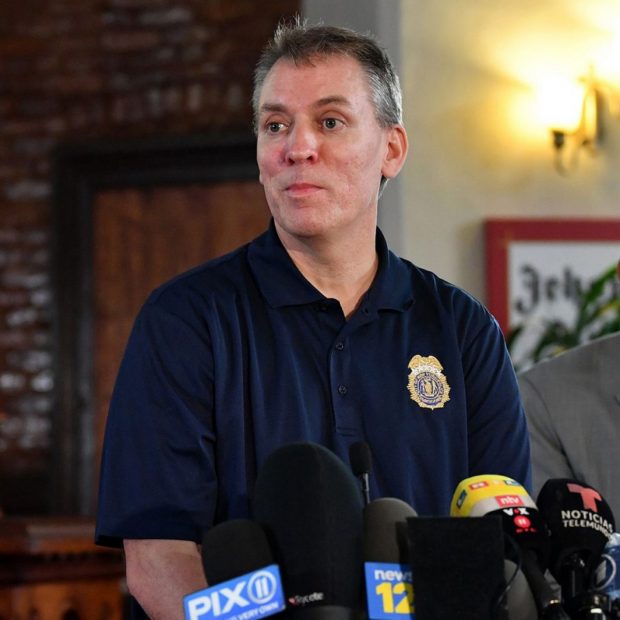
Police Commissioner Dermot Shea
One of the priorities of the NZPD is the fight against terrorism. A new “anti-terrorism” unit was launched a few years ago and has an annual budget of $ 200 million. The NYPD is probably one of the few police agencies, if not the only one, that also has some kind of secret service function. A handful of employees are said to be stationed in other countries to collect information there to protect the city from terrorist attacks.
The work of the NYPD has helped New York become the safest metropolis in America. Opinions are divided on the question of how large the authority’s share is in this. Crime has declined sharply in most major cities in America over the past 20 to 25 years, not just in New York. No one can say for sure why, and the experts have various theories on this.
The fact is, New York is a completely different city when it comes to crime than it was in the 1970s and 1980s. A few figures: In the 1970s there were an average of 3,000 murders per year, in 1990 there were more than 2,200, in 2018 “only” 300 – the fewest since there were reliable statistics in 1963. In 1984 the police received 800,000 reports, 30 years later there were only a quarter of them.
Of course, there are also problem areas. On the one hand, there is corruption in the NYPD. It was at its peak in the 1960s and early 1970s (“Serpico” with Al Pacino and “Prince of the City” are two excellent films on the subject). So an independent committee – the Knapp Commission, named after its former federal judge Whitman Knapp – was tasked with investigating corruption in the NYPD. Their 1972 report confirmed what most New Yorkers already knew, but was politically highly explosive: Corruption was widespread and was at least tolerated by management.
The report cites a few examples: Corrupt NYPD police officers, popularly known as “dirty cops”, have regularly collected hush money from operators of illegal operations, resold confiscated drugs, and extorted sex and money from prostitutes. In order to eliminate the competitor of a drug dealer allied with these cops, he was arrested once and the necessary evidence was fabricated by the police themselves.
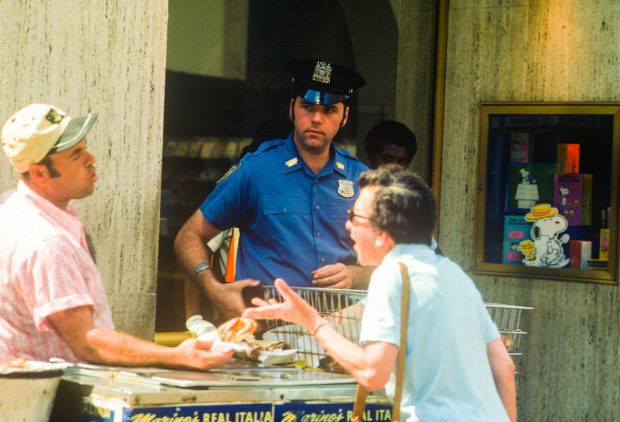
Policeman in the 1970s
It’s hard to put a figure on corruption today. The number of official cases in which officials were investigated is relatively small. However, since corruption practically always occurs between police officers and lawbreakers, only a fraction of it is likely to be known. As a normal citizen, you don’t notice anything of this. In the opinion of many New Yorkers, mine included, almost all cops these days are honest. Any attempt to bribe a police officer charged with normal police duties would very likely result in arrest – and possible jail time. And unlike in other countries, it would not occur to any New Yorker to offer money to an unknown street policeman.
READ: Paramount Hotel Dubai: Gorgeous City Hotel
What the NYPD has been accused of in recent years is the beauty of the statistics. What should actually be attempted murder is downgraded to dangerous bodily harm, burglary trivialized as “unauthorized entry” etc. An anonymous survey by Mulloy College of 2,000 NYPD retirees confirmed that this is part of the culture in the agency.
NYPD scandals are just as common today as they were then. You are a regular media operator in New York. For example, two police officers were charged with raping a drunk woman. And it came to light that in certain districts it was or is customary to “find” drugs in people who did not have any with them as a job creation measure for well-paid overtime.
Federal authorities have been charging NYPD cops in recent years with arms smuggling, operating gaming machines, and smuggling cigarettes between states (a US crime). A recent scandal is the disappearance of parking tickets worth millions, primarily those of family members and friends.
Another topic is the relationship of the NYPD to the various population groups. There is often quite a different opinion about the NYPD in New York, depending on who you ask. Most, if not all, whites have positive attitudes towards the agency. Some are almost enthusiastic and see the police officers as heroes. Blacks and Hispanics, on the other hand, have often had less positive experiences with the NYPD; they complain of discrimination and report racist behavior on the part of officials. The undercover, ie “civil” activities of the NYPD often cause displeasure. The agency infiltrated political movements such as Occupy Wall Street and infiltrated Muslim institutions, which called civil rights activists on the scene.
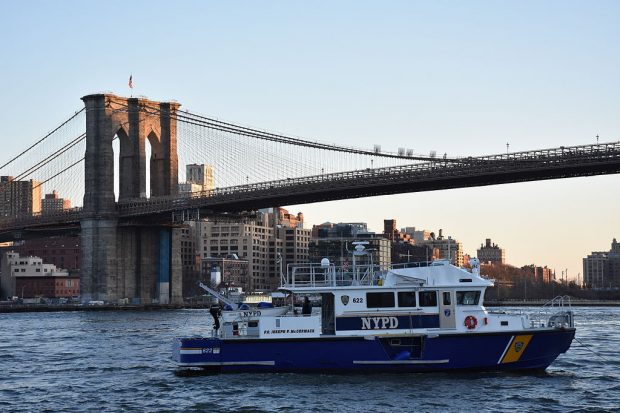
Water police
In 2007, the black New Yorker Sean Bell was killed by police officers in a hail of bullets. The circumstances could never be fully clarified. The police said they believed Bell was trying to attack them with a pistol, but a weapon was never found. Although no one really knows what happened then and everyone has the same information about the shooting, many whites assumed that the police officers acted to the best of their ability, while almost all blacks and many of the Latinos said the shots were an overreaction and some of them even called the police officers involved “murderers”. The Black Lives Matter protests triggered by the murder of George Flloyd also show how uncomfortable there is with the NYPD among many citizens.
The huge organization – by the way, with around 18 percent women – has its price. The agency’s budget is around $ 4 billion, a large part of which is paid for by officials. The average NYPD police officer makes about $ 90,000 a year after serving for about six years – a salary that most New York working people can only dream of. This does not yet include any remuneration for overtime, which can even increase the salary by up to 20 or even 30 percent. Higher ranks earn more. There are excellent social benefits and a strong union that ensure that officials almost never get fired if they don’t steal the proverbial silver spoon. Police officers can retire after only 20 years of service and then receive 50 percent of their original income-tax-free for the rest of their lives.
READ:Make Your Dream Come True: Getting Married in New York
Therefore there are quite a few “retirees” around 40 who have the freedom to do other jobs. Mayor Bloomberg wanted to abolish this pension scheme for future civil servants because he said the city could no longer afford it. His successor De Blasio has not yet addressed the issue. However, the police union – how could it be otherwise – is not even happy with current pay and says police officers in the NYPD are underpaid compared to other cities in the US.
The NYPD- a law enforcement agency as complex and sometimes contradicting as the city it serves.
Like us on Facebook for more stories like this: